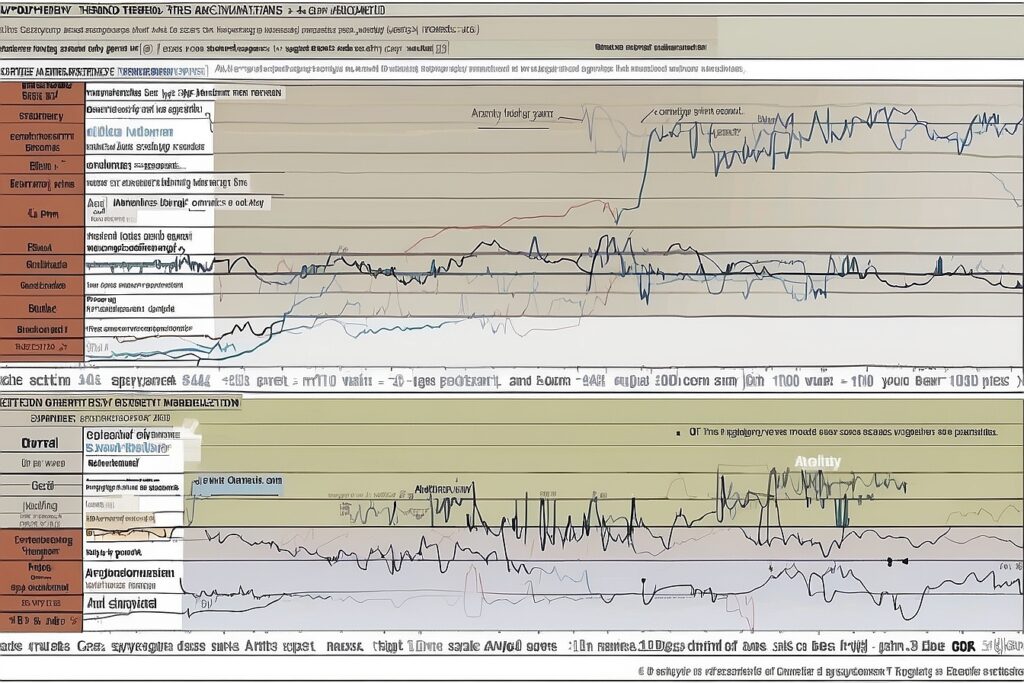
In my previous remarks, I erroneously stated that today is the only day that also serves as a command. However, a few individuals rightfully pointed out that “March first” also qualifies. One can always learn something new. Amidst the bustling atmosphere of the L1 yearly event here in Los Angeles, attendees are not only focused on mortgage-related discussions but are also looking forward to non-mortgage topics, such as the impending start of Daylight Saving Time this weekend (spring ahead!).
Companies that wisely saved their earnings from 2020 and 2021 are now investing in smart technology, although some are still allocating funds for signing bonuses, yielding varied outcomes. Lenders, on the other hand, are diligently assessing, procuring, and implementing technology that may have been overlooked during the tumultuous period of the pandemic 3-4 years ago. All the while, they remain committed to generating high-quality, compliant loans, a hallmark of reputable lenders.
Mortgage and Brokerage Solutions, Offerings, and Software Platforms
Fed up with sluggish loan processes hindering your progress? Let Loan Solutions Plus be your partner in unleashing the ultimate automation experience to outpace your competitors. Collaborate with Loan Solutions Plus to thrive on the journey to Encompass Web. Empower your origination with intuitive, guided, automated Task-Based Workflows.
Achieve lightning-fast pre-approvals, leaving manual tasks behind with AI Underwriter. Streamline income verification, reduce manufacturing costs, and shorten cycle times with Prism Income. Enable your production team to effortlessly validate and deliver precise disclosures, saving time and preserving sanity with Disclosure Automation.
Don’t miss the opportunity to witness our solutions in action at EXP24! Space is limited, so secure your spot today. P.S. Looking for an adrenaline rush before EXP24? Join our Supercar Experience on March 18th! Go-karts, supercars, networking, and even a cameo by Ricky Bobby await. More details here. Remember, as Ricky Bobby said, “If you ain’t first, you’re last!” Reserve your demo now and secure your place in the winner’s circle.
Maxwell’s Latest Mortgage Lending Report Forecasts Market Recovery in 2024! Curious about what lies ahead for the 2024 market? Maxwell’s freshly released Q4 2023 Lending Report highlights robust signs of market recovery. In a significant turnaround, loan volume in Q4 witnessed year-over-year growth for the first time since 2021. Moreover, the report identifies areas where lenders are uncovering opportunities, such as through innovative offerings like HELOCs. To access exclusive data, charts, and insights on staying ahead of the market reset, download Maxwell’s Q4 2023 Mortgage Lending Report here.
“Lender Price Earns Prestigious 2024 ICE Lenders’ Choice Award for Innovative Service Provider. The ICE Innovation Awards celebrate trailblazers in the industry who are pushing boundaries by crafting extraordinary solutions with ICE Mortgage Technology® to achieve their business objectives. In today’s dynamic market, selecting a vendor trusted by major industry players is paramount.
With a proven track record, Lender Price equips lenders of all sizes with robust PPE technology to navigate market shifts seamlessly. Our pricing engine offers unparalleled flexibility, scalability, and user-friendliness, delivering a cost-effective, comprehensive suite of solutions tailored to our clients’ unique requirements. Capital markets teams benefit from enhanced features, including automated base price management, granular margin control, multidimensional rules administration, pipeline oversight, and much more. Reach out today or schedule a meeting with us at ICE Experience 2024.”
Matic, a digital home insurance platform designed for the mortgage sector, has recently forged a new alliance with GVC Mortgage to expand its marketplace of over 40 A-Rated carriers into GVC Mortgage’s customer offerings. GVC Mortgage joins over 100 lenders, servicers, and banks, representing 20 percent of U.S. home loans processed, partnering with Matic to integrate the insurance shopping experience into the homeownership journey.
Now more than ever, mortgage leaders are turning to Matic to offer value to customers, generate revenue, and cut costs in a challenging housing market. If you’re a mortgage leader, seize the opportunity: Schedule a demo with Matic to learn how to incorporate an ancillary revenue stream that streamlines the insurance process and keeps customers within your existing systems. Book a demo.
Enhance end-of-loan processing with a capability that can simplify the lien release process seamlessly. The ICE MSP® loan servicing system now introduces Automated Lien ReleaseSM (ALR), a seemingly straightforward capability that expedites the release of fully paid liens in days, not weeks.
ALR streamlines the typically arduous lien release process by integrating document creation and automated workflows into one solution, and routing lien release packages for eSigning and eRecording in accordance with local county regulations. Read the latest blog from the experts at ICE Mortgage Technology to discover how ALR is helping servicers release fully paid liens in a fraction of the time.
Wholesale, Brokerage, and Correspondent Program Updates
Introducing new features and programs is a hallmark of Gateway Correspondent Lending’s commitment to empowering clients for success. Among our latest offerings are Temporary Buydowns and Non-Delegated Jumbo options, catering to loans with amounts up to $3 million.
Additionally, Gateway proudly presents the Texas Veterans Land Board Housing Assistance Program, designed to provide qualified Veterans residing in Texas with below-market interest rates. Veterans with a service-related disability of 30 percent or higher may benefit from an additional 0.50 percent reduction in interest rates. For further details, please don’t hesitate to contact CorrSales@GatewayLoan.com or reach out to your Regional Sales Manager. Visit www.gatewaycorrespondent.com for contact information.
“We’re excited to announce that GHMC is now FCM TPO, marking a significant milestone in our evolution within First Colony Mortgage. Starting March 4th, we’ll operate our TPO channel under ‘First Colony Mortgage’ FCM TPO, aligning with our 40-year legacy of excellence. With our new TPO Leadership team, including Nectar Kalajian as Managing Director, Omar Cantillo as President, and Deborah Schwartz as COO, we’re poised to deliver top-notch service, cutting-edge products, advanced technology, and competitive pricing.
To explore partnership opportunities as an approved broker or to learn more about our three NDC options, please contact Omar Cantillo,” shared Corey Shelley, Chairman of First Colony Mortgage.
Updates on Government-Backed Mortgage Programs: FHA, VA, and USDA
During the Texas Mortgage Banker’s Southern Secondary Conference, insights were shared by Alanna McCargo, President of Ginnie Mae, shedding light on the critical role played by Ginnie Mae in facilitating the scalability of FHA and VA programs. As a government-owned corporation, Ginnie Mae ensures the liquidity of mortgage-backed securities for federal housing programs, although it does not directly administer the FHA, VA, or USDA programs.
What initiatives is Ginnie Mae undertaking? Transparency is a key focus for Ginnie Mae, along with a commitment to promoting societal welfare and supporting the aging population. New capital requirements set to be implemented by the end of the year aim to bolster stability within the organization. Moreover, Ginnie Mae is actively working to enhance accessibility to its platform, particularly for smaller banks and credit unions.
It’s worth noting that the largest investors in Ginnie Mae securities hail from Asia, despite Ginnie Mae not issuing securities itself. As highlighted in recent press releases, Ginnie Mae’s mortgage-backed securities (MBS) portfolio reached $2.53 trillion in January, with total MBS issuance amounting to $28.1 billion and a net growth of $10.8 billion. This surge in MBS issuance in January provided financing for over 91,000 households, including more than 46,000 first-time homebuyers.
A significant portion of the January MBS issuance, approximately 77.6 percent, supported home purchases, reflecting subdued refinance activity due to elevated interest rates. Notably, California accounts for the largest share of loans backing these securities, followed by Texas as the second-largest state in the portfolio with $241 billion.
In a new All Participants Memorandum (APM) 24-01, Ginnie Mae announced modernizations to its Manufactured Housing Mortgage-Backed Securities (MH MBS) program, aiming to broaden program participation and enhance liquidity for manufactured housing borrowers. These enhancements, prompted by a comprehensive program review, align with the Biden-Harris administration’s efforts to bolster housing supply and affordability. Concurrently, FHA introduced Mortgagee Letter (ML) 2024-02, introducing the Payment Supplement loss mitigation home retention solution to aid borrowers in averting foreclosure and retaining their homes.
Further, FHA unveiled its final rule, Indexing Methodology for Title I Manufactured Home Loan Limits, which establishes indexing methodologies for its Title I Manufactured Home Loan Program. This rule, effective from March 29, 2024, facilitates the calculation and adjustment of loan limits using sales data compiled by the U.S. Census Bureau, thereby expanding financing options for borrowers seeking to purchase or refinance manufactured homes.
Additionally, USDA Rural Development announced a bulletin detailing a decrease in interest rates for SFH Direct Programs, providing further financial relief for eligible borrowers in rural areas. Plaza Home Mortgage® showcased its efficiency by facilitating the closing of a 203(k) renovation loan in just 13 days, highlighting the opportunity for borrowers to finance home repairs or renovations using FHA 203(k) Standard or Limited loan programs.
Market Performance and Trends

The Intersection of Housing Demand and Market Dynamics
In the realm of real estate, the perpetual tug-of-war between supply and demand persists, notably impacting the housing sector. Recent data reveals a 1.5 percent uptick in new home sales for January, yet this positive momentum is tempered by a revised downward trajectory in December figures. The current sales pace, standing at 661,000 units, falls slightly short of the initially reported December figure of 664,000.
Despite this modest monthly increase, the year-over-year growth in new home sales stands at a respectable 1.8 percent. However, this statistical gain belies the underlying challenges plaguing the housing market. High land costs, regulatory hurdles, construction expenses, and a dearth of financing options collectively conspire to hinder the development of affordable housing. Consequently, homeownership remains elusive for many prospective buyers and families.
Moreover, while new home inventories are on the rise, the average price experienced a notable decline of 2.6 percent in January. This contrasts sharply with the trajectory of resale home prices, which surged by 5.0 percent amid persistent inventory constraints. The insufficiency in constructing affordable housing units further exacerbates the growing chasm between housing demand and supply.
Amid these housing market dynamics, other economic indicators paint a nuanced picture. Manufacturing activity witnessed a notable deceleration, with durable goods orders plummeting by 6.1 percent in January. Notably, a significant 58.9 percent decline in nondefense aircraft orders precipitated this downturn.
Consumer sentiment also wavered in February, with confidence levels dipping from 110.9 to 106.7. Heightened sensitivity to perceived job market vulnerabilities contributed to this decline. Real personal spending saw a marginal decrease of 0.1 percent in January, while discretionary spending growth stagnated at an annualized rate of 0.8 percent. Addressing inflationary pressures remains a focal point for policymakers, with the PCE deflator registering at 2.8 percent year-over-year in January.
Looking ahead, the U.S. jobs report for February looms large on the economic horizon. Chair Powell’s testimony before Congress, coupled with the ECB’s monetary policy decision, further adds to the week’s economic narrative. Anticipated highlights include employment growth projections of 190,000 jobs, with the unemployment rate expected to hold steady at 3.7 percent. Notably, the anticipated slowdown in average hourly earnings growth from +0.6 percent to +0.2 percent underscores ongoing labor market dynamics.
Beyond employment metrics, a plethora of data points will command attention, including ISM non-manufacturing PMI, factory orders, ADP employment, JOLTS job openings, wholesale trade figures, Challenger layoffs, trade deficit statistics, productivity metrics, and unit labor costs. Additionally, agency prepayments and Class A net outflows will provide further insights into market liquidity dynamics.
Against this backdrop, the financial markets exhibit a degree of stability, with Agency MBS prices showing minimal deviation from late Friday levels. The 10-year Treasury yield stands at 4.20 percent, marginally higher than the previous week’s close, while the U.S. risk-free 2-year Treasury rate hovers at 4.55 percent.



